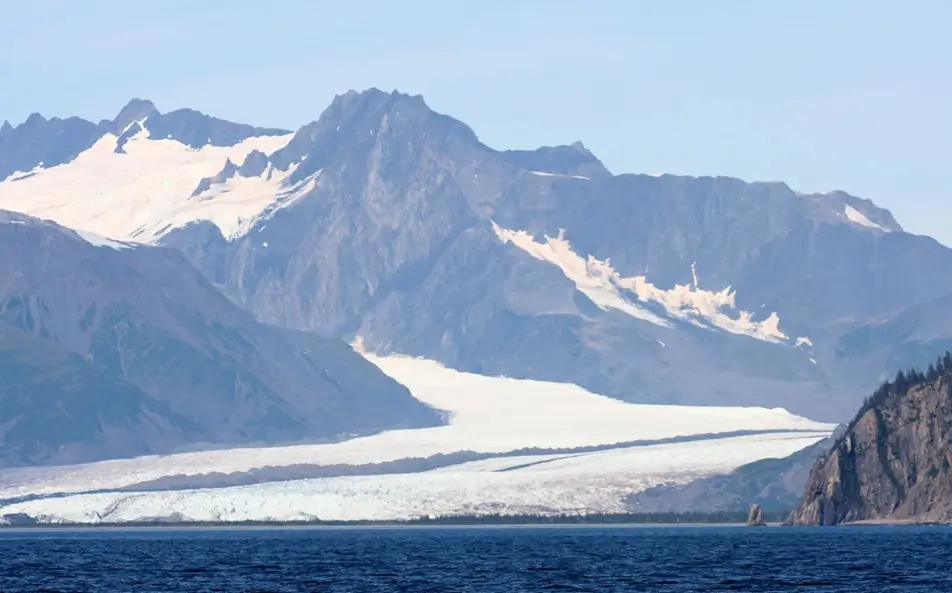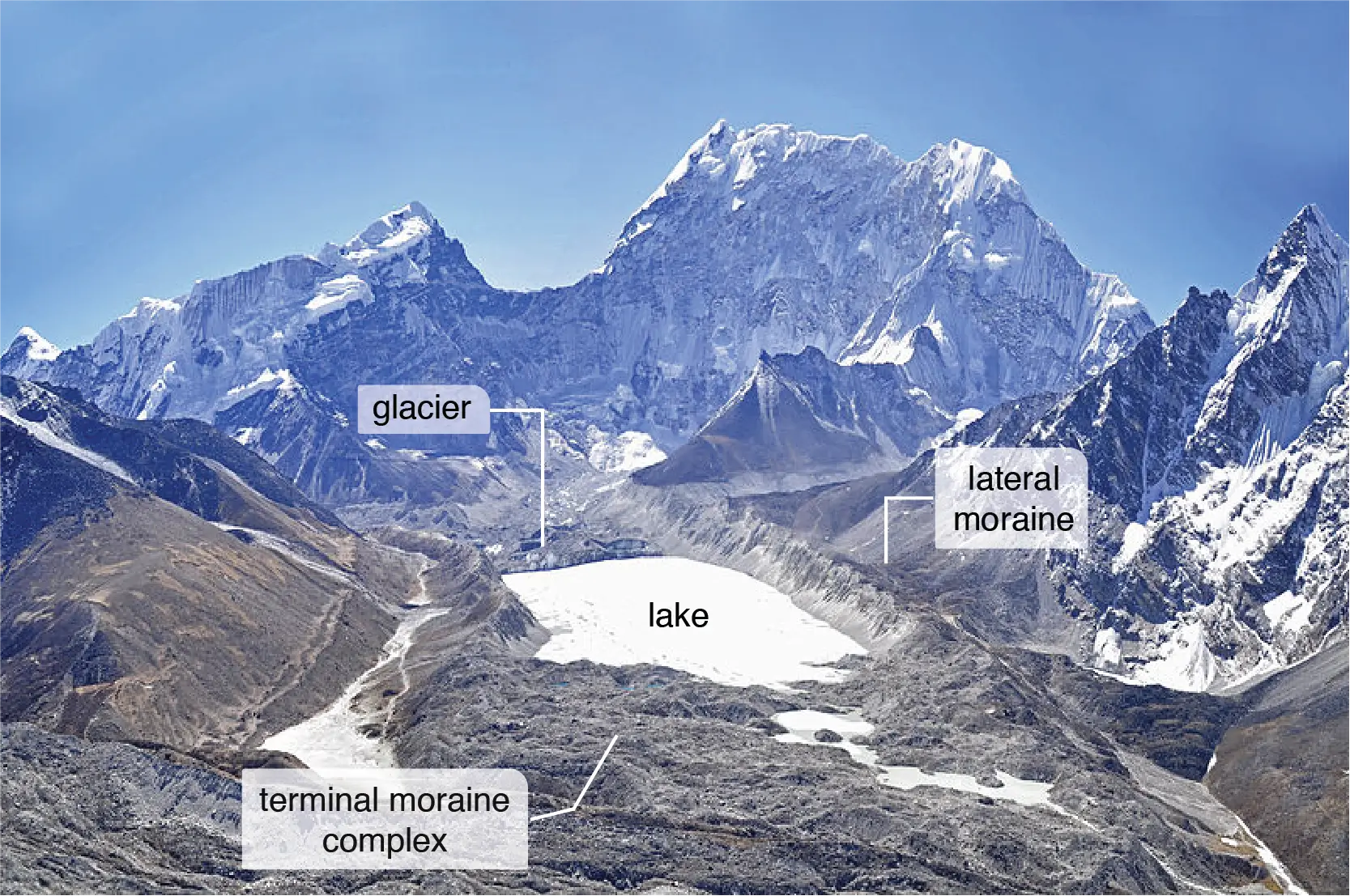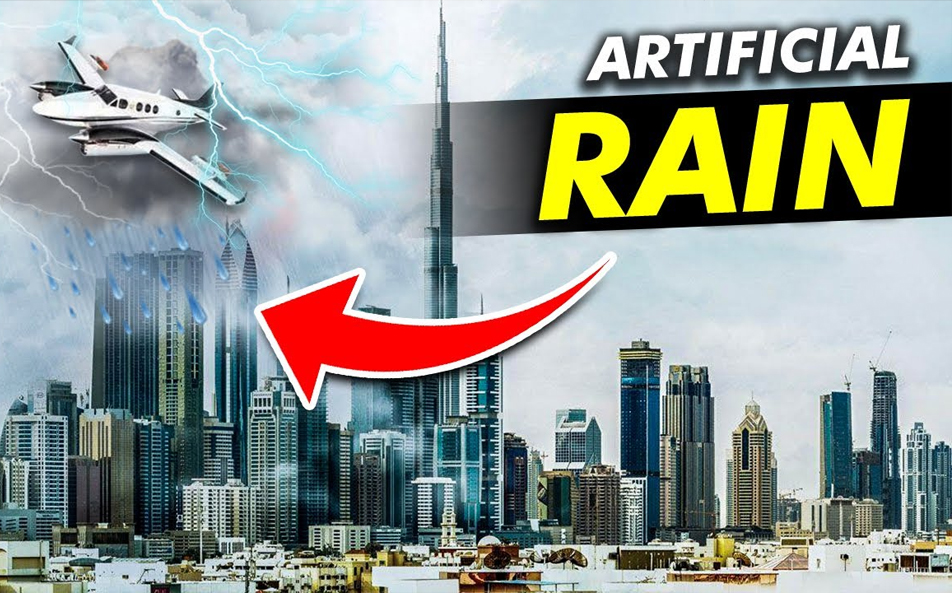
The United Indian

The Himalayas, often referred to as the "Third Pole," are a majestic crown of snow and ice. It’s a source of life for millions across Asia. But beneath this beauty lies a growing threat - the alarming phenomenon of Glacial Lake Outburst Floods (GLOFs).
Understanding Glacial Lake Outburst Floods (GLOFs):
Glacial lakes form when glaciers melt, creating pools of water in the valleys they leave behind. However, when temperatures rises, these lakes may become unstable due to increased meltwater inflow or the deterioration of natural barriers like moraines or ice dams. When these barriers break, either gradually or catastrophically, the stored water is released in a massive flood known as a GLOF. These floods can send tremendous amounts of water, debris, and ice downstream, wreaking devastation on everything in their path. The abrupt release of tremendous amounts of water can cause deadly floods, which surge down valleys with enormous destructive power.
Causes and Contributors: A Cause for Alarm
Climate change is the primary driver behind the accelerated melting of glaciers, leading to more hazardous glacial lake outbursts. Rising temperatures cause glaciers to retreat at unprecedented rates, feeding these lakes with more meltwater. Additionally, factors like erratic precipitation patterns and seismic activity further exacerbate the risk of GLOFs. Human activities, such as infrastructure development and resource extraction in vulnerable areas, also increase the likelihood of GLOFs by altering natural drainage systems and destabilizing glacial lake barriers.
The Hindu Kush Himalayan region is particularly vulnerable to GLOFs due to several factors:
• Rapid Glacial Retreat: Climate change is causing glaciers to melt at an unprecedented rate, leading to the formation of numerous glacial lakes.
• Fragile Dams: Moraine dams, often composed of loose debris, are highly susceptible to failure due to factors like increased water pressure and seismic activity.
• Downstream Vulnerability: Densely populated valleys at downstream of these glaciers are at high risk of catastrophic glacial lake outburst.
Impacts of Glacial Lake Outburst Floods
The consequences of GLOFs are far-reaching and devastating. Entire villages can be swept away, infrastructure destroyed, and agricultural land rendered unusable. Loss of life is tragically common, with communities living downstream of glacial lakes facing constant threat and uncertainty. The ecological impact is equally severe, with habitats destroyed, biodiversity threatened, and downstream water sources contaminated with debris and sediment. The economic toll of GLOFs is staggering, often pushing affected communities deeper into poverty and hindering long-term development efforts.
Here's a glimpse of the potential devastation:
• Loss of Life and Livelihoods: Flash floods triggered by GLOFs can cause widespread destruction, sweeping away homes, infrastructure, and agricultural land. Lives can be lost, and communities displaced.
• Economic Damage: The economic impact of a GLOF can be crippling. Damage to infrastructure, loss of crops and livestock, and disruption of essential services can cost billions of dollars.
• Water Scarcity Paradoxical: Though a glacial lake outburst of water initially, GLOFs can lead to long-term water scarcity. The sudden release of water can disrupt natural water flow patterns, impacting river systems that millions depend on for irrigation and drinking water.
Statistical Observations
1. Rate of Melting: The World Glacier Monitoring Service reported that glaciers in their reference network lost an average of more than 1.3 meters (4.3 feet) of thickness between October 2021 and October 2022. This is significantly higher than the average loss over the last decade.
2. Cumulative Loss: Since 1970, glaciers in this reference network have lost a cumulative thickness of almost 30 meters (98 feet). This translates to an average loss of 27.5 meters (90 feet) from the top of each glacier.
3. Impact on Sea Level: A 2020 study found that melting of glaciers is currently the biggest contributor to rising sea levels, even exceeding the Greenland and Antarctic ice sheets. The study estimates that between 2000 and 2019, glaciers collectively lost around 267 billion tonnes of ice every year, contributing 0.74 millimeters of sea level rise annually. This highlights the significant impact of melting glaciers beyond just regional water supplies.
4. Alarming Acceleration: Experts report that the pace of glacier loss has accelerated significantly over recent decades. Data suggests a jump from -171 millimeters (6.7 inches) per year in the 1980s to -889 millimeters (2.9 feet) per year in the 2010s.
A Race Against Time
The scientific community is actively monitoring the glacial lakes & and predicting potential melting of glaciers that might lead to GLOF events. However, complete prevention may not be possible. Therefore, our focus must shift towards mitigation and preparedness. Here are some key strategies:
• Early Warning Systems: Developing robust early warning systems is crucial to alert communities of impending GLOF threats. This allows for evacuation and reduces casualties.
• Engineering Solutions: In some cases, engineering solutions like lowering lake levels or strengthening moraine dams can be employed to reduce the risk of outbursts. However, these solutions are complex and expensive.
• Community Awareness: Educating communities living downstream of glacial lakes about the risks of GLOFs and preparing them for evacuation plans can save lives.
Protecting Vulnerable Communities and Landscapes
Addressing the issue of melting of glaciers necessitates a multifaceted approach that includes scientific study, community engagement, and proactive risk mitigation techniques. Early warning systems, such as remote sensing and monitoring technology, are critical in alerting vulnerable areas to approaching GLOFs, providing them important time to evacuate and prepare. Infrastructure development must consider the possibility for GLOFs, with careful design and engineering solutions targeted at decreasing vulnerability and increasing resilience. Sustainable land management methods can help alleviate the effects of climate change by preserving natural barriers and ensuring the health of glacial lake ecosystems.
International Cooperation and Support
Given the transboundary nature of many glacial lake systems, international cooperation is essential for effectively managing the risk of GLOFs. Collaborative research initiatives, knowledge-sharing networks, and capacity-building efforts can help vulnerable countries develop the tools and expertise needed to assess and respond to the threat of GLOFs. Financial support from the international community is also critical, providing resources for disaster preparedness, infrastructure upgrades, and community resilience-building initiatives.
Individual Responsibility
While large-scale mitigation strategies are crucial, individuals can also play a part in preventing glacial lake outburst. By reducing our carbon footprint and advocating for climate-friendly policies, we contribute to slowing down glacial melt and reducing the risk of GLOFs.
This means making small changes in your daily life: using energy-efficient appliances, opting for public transport or cycling, and reducing consumption of meat. Even seemingly insignificant acts, like switching off lights or unplugging electronics, can make a difference when multiplied by millions. Remember, individual responsibility isn't just about personal choices, it's about advocating for climate-conscious policies and supporting businesses that prioritize sustainability. Every step, no matter how small, paves the way for a future where glaciers have a fighting chance.
The Call to Action
The Himalayas are not just a majestic mountain range; they are the lifeline of millions. Protecting them from the perils of GLOFs is not just an environmental concern but a humanitarian imperative. We must act collectively, supporting research, mitigation efforts, and advocating for climate action.
Let us not allow the "Third Pole" to become a source of destruction. Let us ensure its majestic beauty continues to nourish and inspire generations to come. Share this blog, raise awareness, and join the fight to protect our planet from the looming threat of melting of glaciers.
Conclusion
The specter of Glacial Lake Outburst Floods looms large over vulnerable communities and landscapes, demanding urgent action to mitigate the risks posed by climate change. By understanding the causes and impacts of melting of glaciers, we can safeguard lives, livelihoods. We must implement proactive measures to protect at-risk areas and the fragile ecosystems of the world's high mountain regions. Now is the time for concerted international cooperation, innovative solutions, and unwavering commitment to ensure a future where the frozen majesty of our glaciers endures for generations to come.
Read more in Environment
May 27, 2025
TUI Staff
May 27, 2025
TUI Staff

Stay Tuned with The United Indian!
Our news blog is dedicated to sharing valuable and pertinent content for Indian citizens. Our blog news covering a wide range of categories including technology, environment, government & economy ensures that you stay informed about the topics that matter most. Follow The United Indian to never miss out on the latest trending news in India.
©The United Indian 2024
















